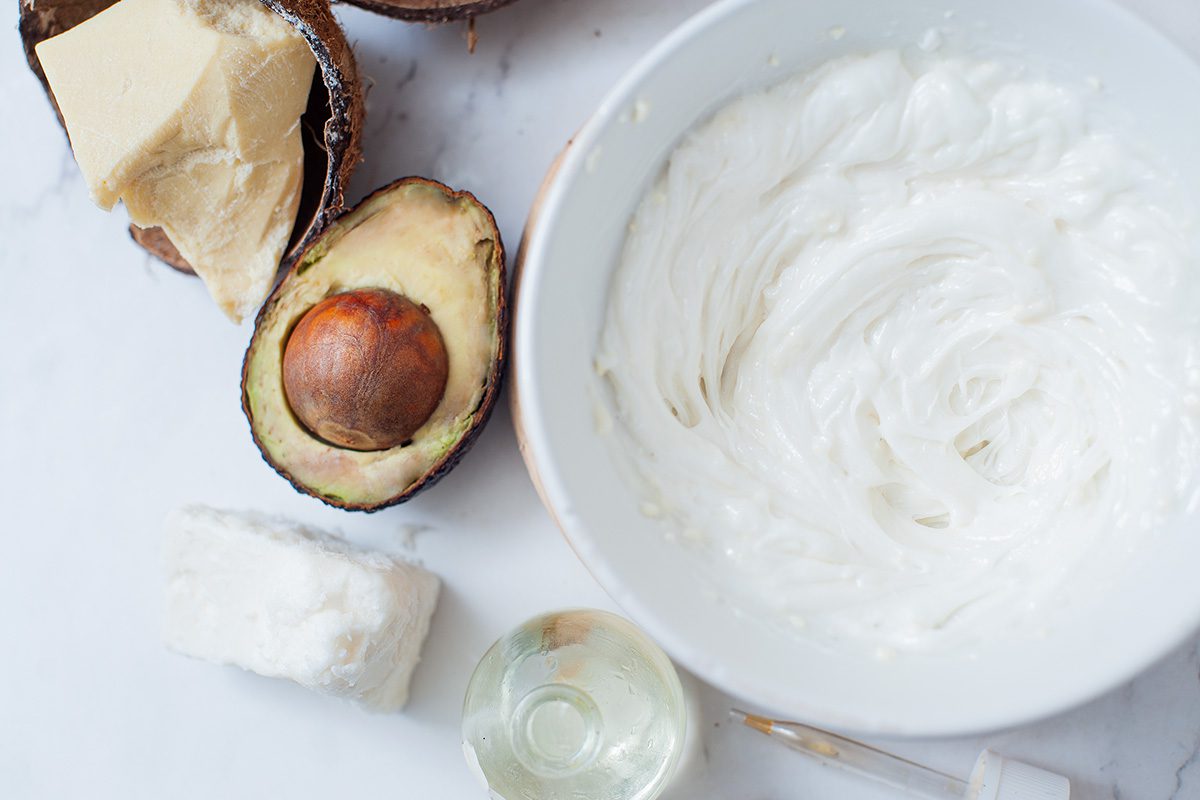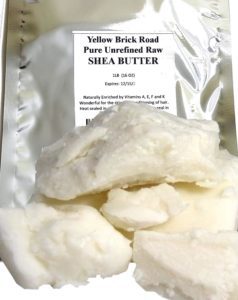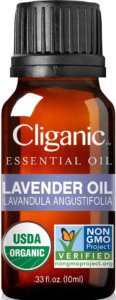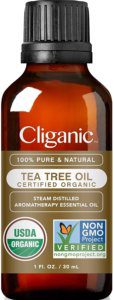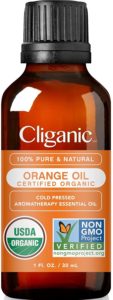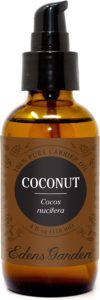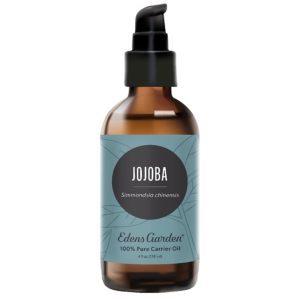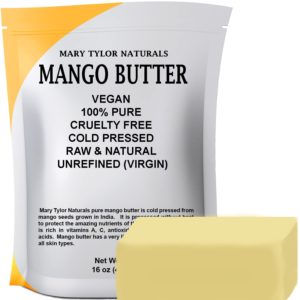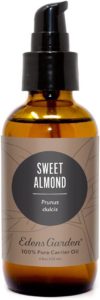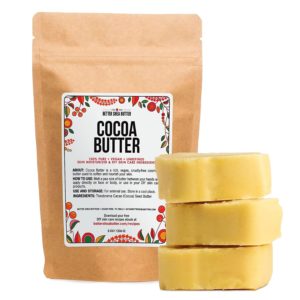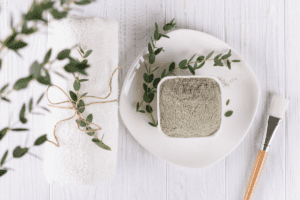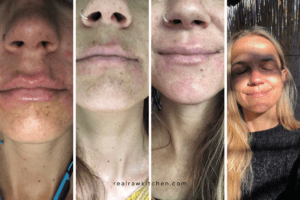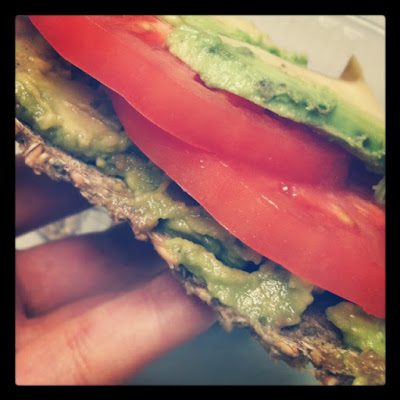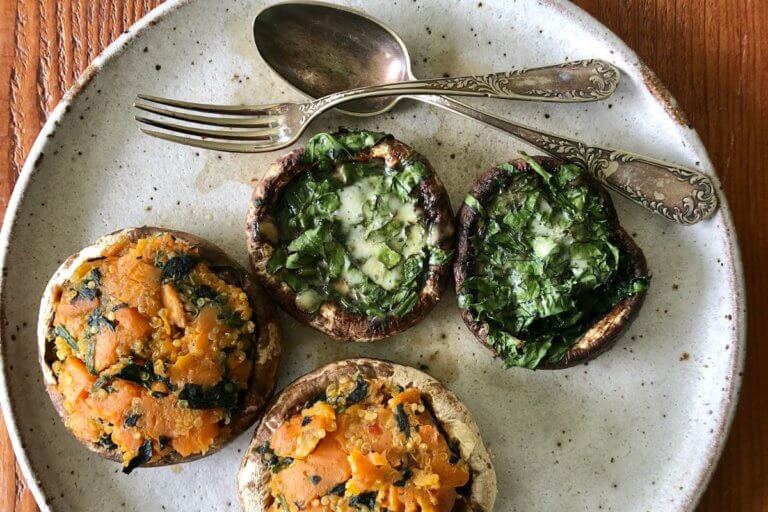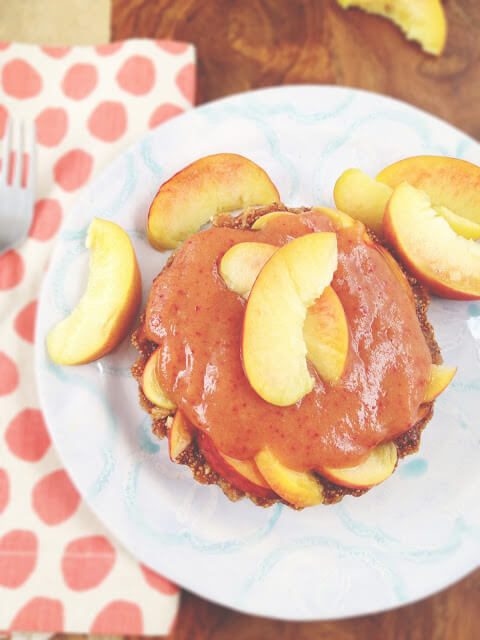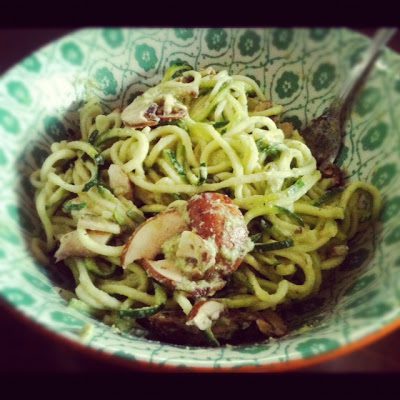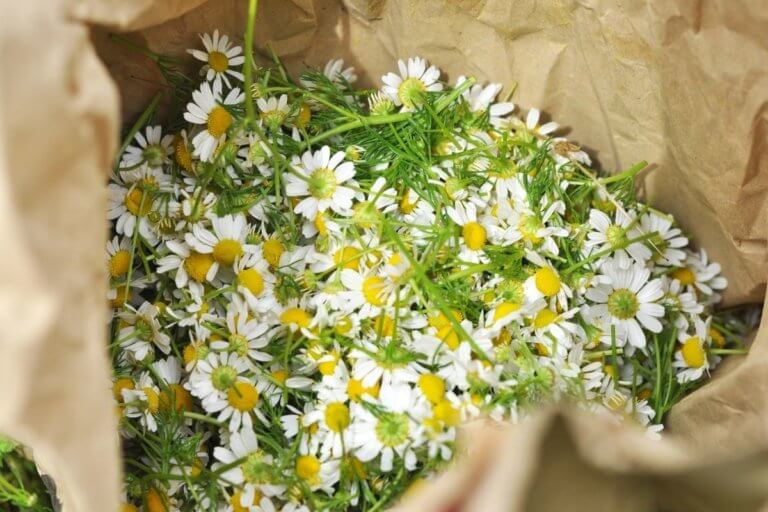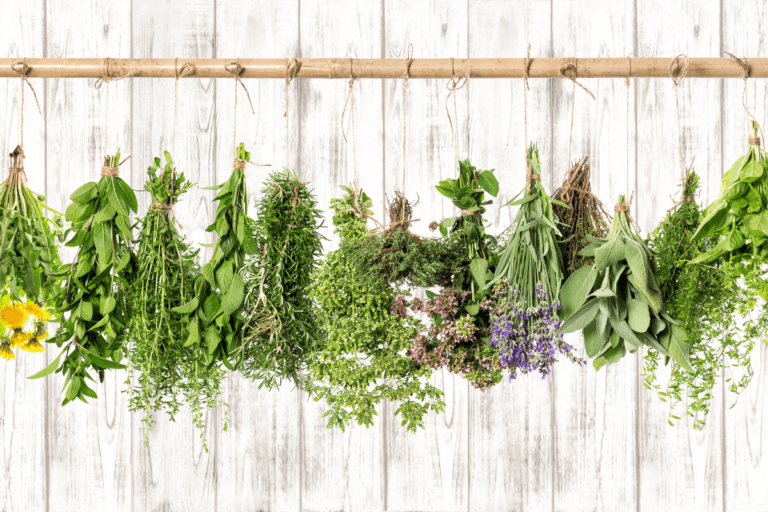Making homemade body butter for glowing skin is my favorite pastime. Seriously.
And if you haven’t made your own whipped body butter before, then I’m excited to introduce you to these four homemade body butter recipes.
The core natural ingredients I use are refined shea butter, cocoa butter, mango butter. The carrier oils I use are sweet almond oil, fractionated coconut oil, and jojoba oil. And, of course, essential oils because homegirl loves a good fragrance.
So which DIY body butter recipe will you choose??
If you’re ready to get started, then jump ahead to the whipped body butter recipes below. I’m going to hang out up here and go through alllllll of the info you need to make body butter for the very first time.
What is Body Butter?
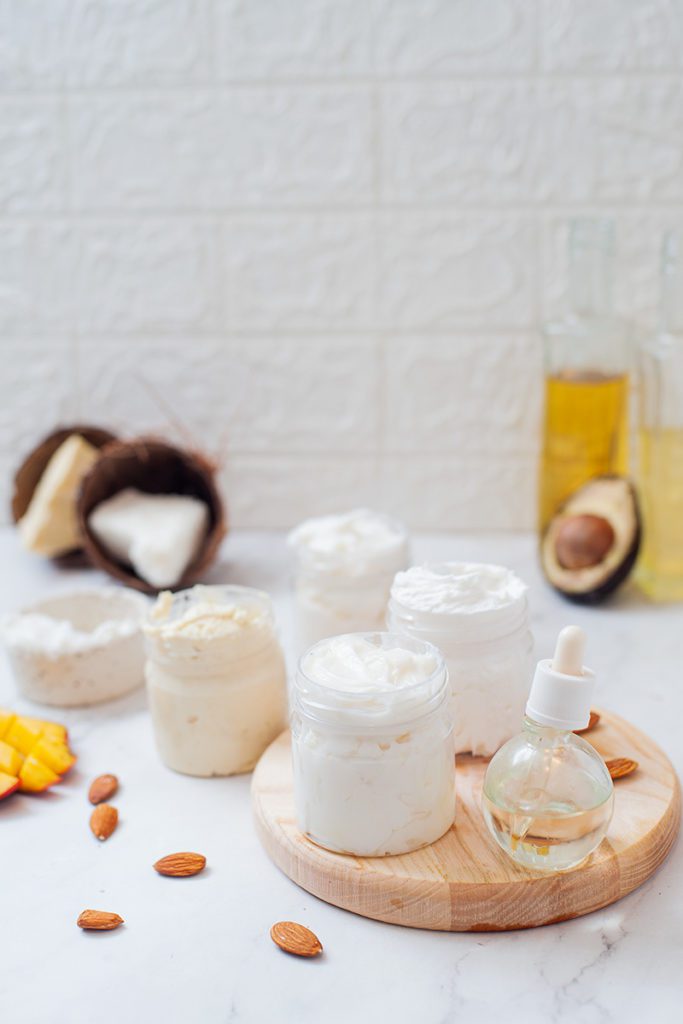

Body butter is a rich, nourishing skincare product designed to deeply moisturize the skin. It’s typically thicker than regular lotions, providing a protective barrier that locks in moisture and keeps your skin soft and smooth.
Body butter, made from natural ingredients like shea, cocoa, and mango butters, and carrier oils, is a luxurious way to hydrate and nourish your skin. It’s perfect for dry areas like hands, feet, elbows, and knees, and can soothe skin conditions such as eczema or rosacea.
- Body Butter vs Lotion: The main difference between body butter and lotions is their consistency and hydration level. Body butters, being thicker and richer, offer intense, long-lasting moisture. Lotions, on the other hand, are lighter and absorb quickly, providing immediate but less durable hydration.
- Whipped Body Butter vs Body Butter: Whipped butter, as the name suggests, is a type of body butter that has been whipped to a light, airy consistency. This process incorporates air into the mixture, making it fluffy and easy to apply. The main ingredients in whipped body butter are usually a type of butter (like shea or cocoa), an oil (like coconut or jojoba), and sometimes essential oils for fragrance.
The recipes shared here, on the other hand, are not just whipped body butters. They are carefully crafted blends of different butters and oils, each with their own unique properties and benefits for the skin. If you’re seeking deep, enduring moisturization that leaves your skin glowing, these whipped body butter recipes are your go-to product.
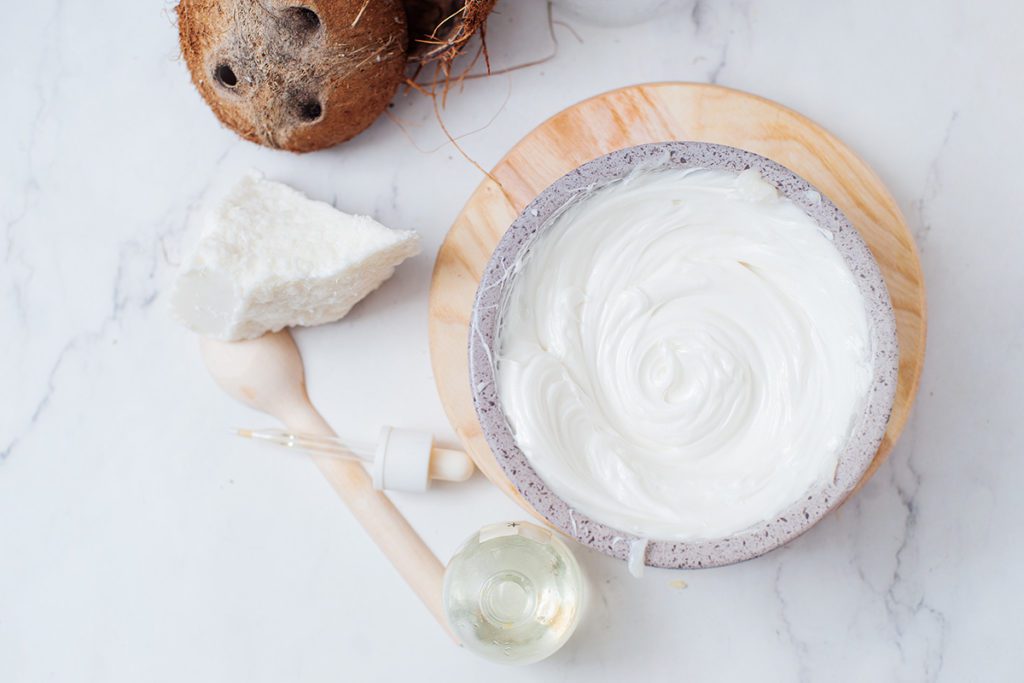

Why Homemade Body Butter?
You might be wondering, why go through the trouble of making body butter at home when you can easily pick one off the shelf? Well, it’s way more fun making your own. Plus, it’s a lot cheaper, produces less waste, smells amazing, and can be tailored to your needs.
Here’s what I mean.
Advantages of DIY Body Butter
- Control Over Ingredients: When you make your own body butter, you know exactly what’s going into it. No hidden chemicals, no artificial fragrances, and no preservatives. Just pure, skin-loving ingredients that you trust and choose.
- Customization: Everyone’s skin is unique, and what works for one might not work for another. With DIY body butter, you can tailor the ingredients to suit your skin type and needs. Need extra moisture? Add more nourishing oils. Want a calming effect? Add some lavender essential oil. The possibilities are endless!
- Cost-Effective: High-quality body butters can be quite pricey. But when you make them at home, you’ll be surprised at how much you can save. Plus, the ingredients used can often be found in your kitchen or are easily available online or at health stores.
- Environmentally Friendly: By making your own body butter, you’re not just doing your skin a favor, but the environment too. You can say goodbye to plastic packaging and hello to reusable glass jars.
- Therapeutic: The process of creating your own body butter can be incredibly therapeutic. The act of measuring, melting, and mixing can be a form of self-care in itself. Plus, the satisfaction of using something you’ve made with your own hands? Priceless!
Essential Ingredients in Homemade Body Butter for Glowing Skin
When it comes to achieving a radiant, glowing complexion, the ingredients you use on your skin matter just as much as the food you put into your body. Here are some of the key ingredients that can help enhance your skin’s natural glow:
Shea Butter
Shea butter is a skin superfood that comes from the seeds of the fruit of the Shea (Karite) tree and is naturally rich in vitamins A, E, and F. It provides the skin with essential fatty acids and the nutrients necessary for collagen production. In fact, it’s shown to be effective in smoothing skin on people with eczema. Unrefined shea butter has been used in Africa and many other locations for years to improve skin and hair.
Essential Oils
There is a ton of research around essential oil benefits and many essential oils can be beneficial to the skin. Different essential oils like lavender oil, tea tree oil, and others have been found to have various benefits for the skin. They can help to balance, nourish, and restore the skin’s natural glow.
My favorite essential oils for the face are lavender, rose, and peppermint essential oil. Citrus oils can provide a refreshing and brightening sensation while improving skin tone with all the Vitamin C they offer. How much essential oil you use depends on your own tolerance for essential oils and whether you’d like an unscented body butter or not.
Coconut Oil
Coconut oil is a fantastic moisturizer for dry or flaking skin. It’s just as effective as mineral oil and even has antimicrobial properties that can help treat skin infections. Plus, it’s great for atopic dermatitis patients. And guess what? It can even improve skin health during wound healing.
Another study published in the Asian Journal of Pharmaceutical Sciences highlights the calming and anti-inflammatory effects of coconut oil, which can soothe irritated skin and reduce inflammation associated with these conditions.
But remember, everyone’s skin is different, so it’s always a good idea to do a patch test before applying it all over your skin. Personally, I like it on my body but not my face. And while coconut oil does contain Vitamin E, you might want to check with a dermatologist to see if it’s enough to have a significant impact on your skin health.
Jojoba Oil
Jojoba oil is a common ingredient in many skincare products because of its ability to strengthen and soften skin. It’s similar to the oil (sebum) your body naturally produces and can help regulate oil production.
Mango Butter
Mango butter is a creamy and decadent butter that is packed with nutrients. It’s rich in vitamins A, C, and E, antioxidants, and essential fatty acids. This butter is deeply moisturizing and works to protect and repair the skin, improve skin tone, and enhance your skin’s natural glow.
According to a study in Scientific Reports, wild mango can be a great cocoa butter alternative, hinting at its rich nutritional profile. Another study shows that mango seed extract has antibacterial and antioxidant properties, which can contribute to skin health. The health benefits of Mangifera indica (the scientific name for mango) are also well-documented, including its positive effects on skin. A study even suggests that eating mango can improve skin conditions (AKA wrinkles) in postmenopausal women.
Almond Oil
Almond oil is my favorite of all carrier oils; it has been used for centuries to treat dry skin conditions, including eczema and psoriasis. It has a light texture and easily absorbs into the skin. It can be used on the face and body, and is thought to induce a calming effect, making it a great choice for dry skin.
It’s my favorite oil for my skin and so it’s really the only one I use directly on my face.
A study published in the Journal of the American Academy of Dermatology found that almond oil can help improve skin barrier function, which is often compromised in people with dry skin conditions like eczema and psoriasis. The oil’s emollient properties help to lock in moisture, preventing skin from drying out.
Cocoa Butter
Cocoa butter is a natural, meltable oil extracted from the cocoa bean. It’s rich in fatty acids, which can penetrate the skin for deep hydration. It’s also high in antioxidants, which help to fight off free-radical damage to the skin. Cocoa butter can help to reduce the signs of aging, including wrinkles and age marks.
I really love that cocoa butter smell 🤤
Cocoa butter, a natural oil extracted from the cocoa bean, is indeed rich in fatty acids and antioxidants. These components are known for their ability to deeply hydrate the skin and fight off free-radical damage, respectively.
A study published in the journal Nutrients highlights the potential of cocoa-derived phytochemicals for skin protection. The research emphasizes that cocoa’s bioactive compounds could have a positive impact on skin health, although the specific molecular and cellular mechanisms are still being explored.
Moreover, a 24-week double-blind, randomized, controlled trial found that regular consumption of cocoa flavanols had positive effects on facial wrinkles and elasticity in moderately photo-aged women. This suggests that cocoa flavanol supplementation may contribute to the prevention of the progression of photo-aging.
However, it’s important to note that while many skincare products contain cocoa butter and claim to improve skin health, the direct evidence of cocoa butter’s effectiveness is still limited. As Medical News Today points out, most studies focus on cocoa powder, which has specific properties that could promote skin health, and less research has been done on cocoa butter specifically. So, while cocoa butter may have potential benefits, more research is needed to fully understand its impact on skin health.
By incorporating these ingredients into your skincare routine, you can help to nourish your skin and enhance its natural glow. Remember, everyone’s skin is different, so it’s important to test out different ingredients to see what works best for your skin type.
DIY Body Butter Recipes for Glowing Skin
What you’ll need to make body butter:
- Electric hand mixer
- Double boiler
- Your favorite essential oils
Recipe 1: Whipped Shea Butter Body Butter
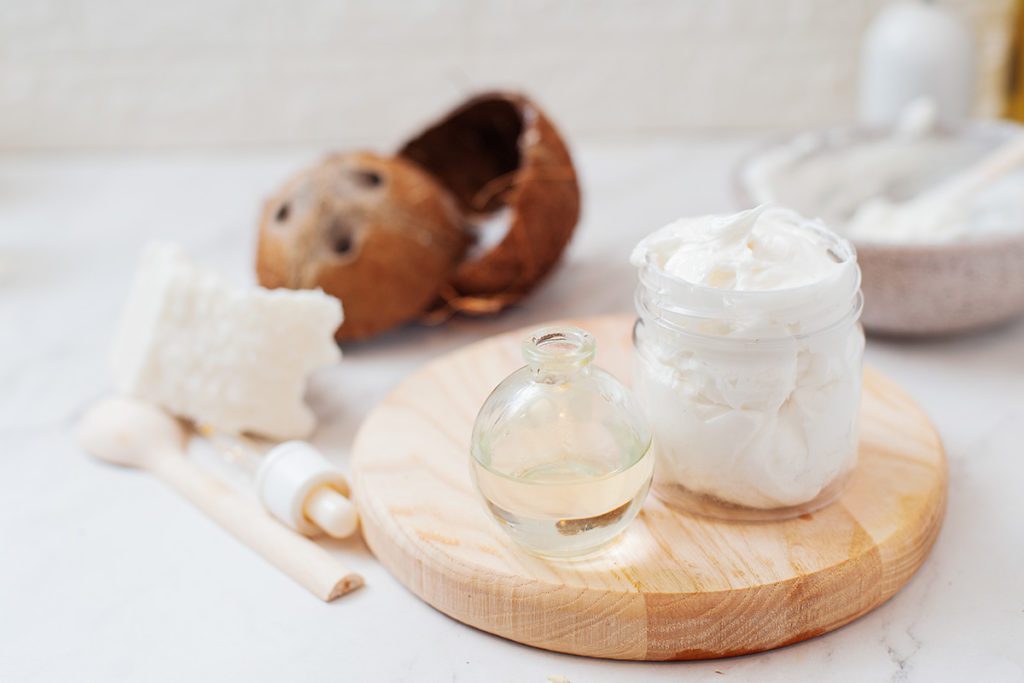

This luxurious DIY whipped body butter recipe is a perfect blend of shea butter, coconut oil, and jojoba oil. Shea butter is known for its moisturizing and anti-inflammatory properties, making it ideal for nourishing the skin. The coconut oil adds a tropical touch and further moisturizes the skin, while jojoba oil, which is similar to the skin’s natural oils, helps balance oil production. The optional addition of essential oils allows you to customize the scent to your liking.
Ingredients:
- 1 cup raw shea butter
- 1/4 cup coconut oil
- 1/4 cup jojoba oil
- 1 drop of Vitamin E Oil (to preserve)
- 10-15 drops of your favorite essential oil (optional)
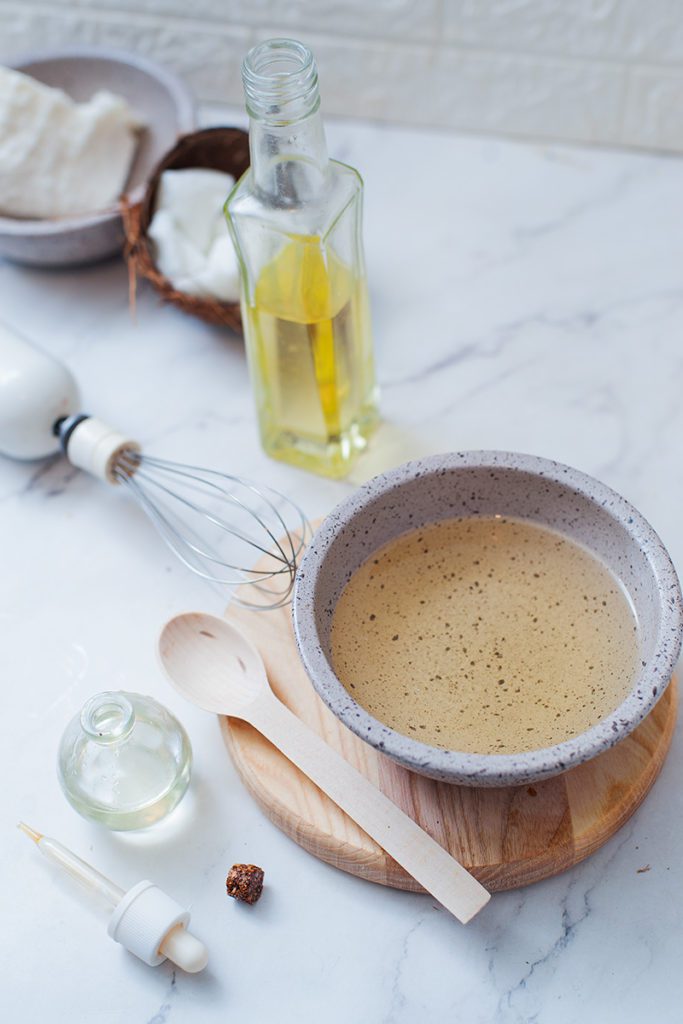

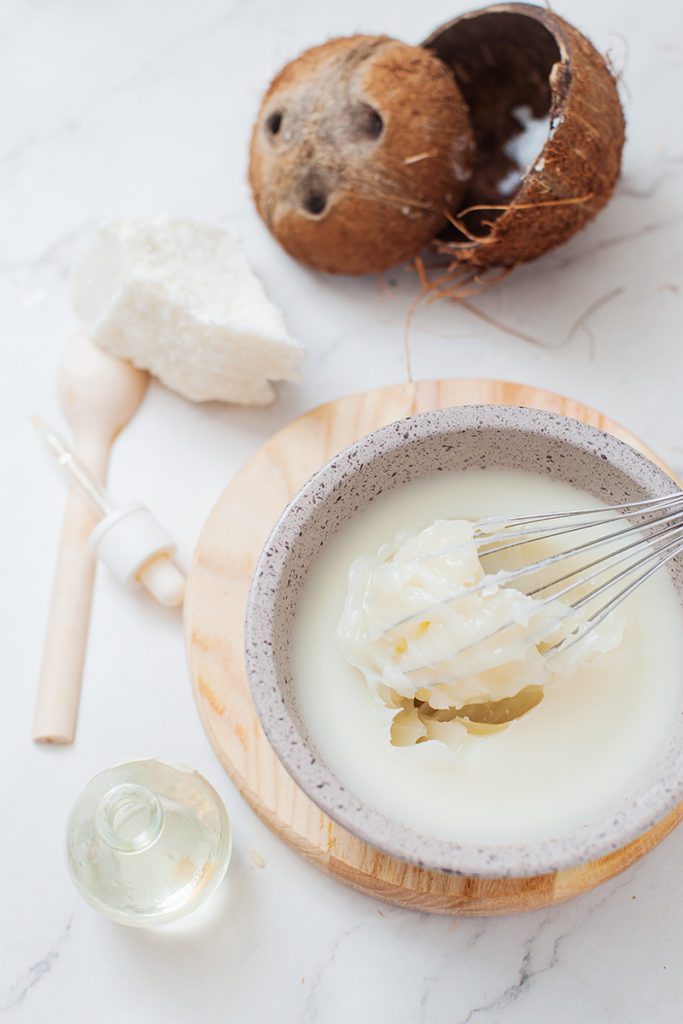

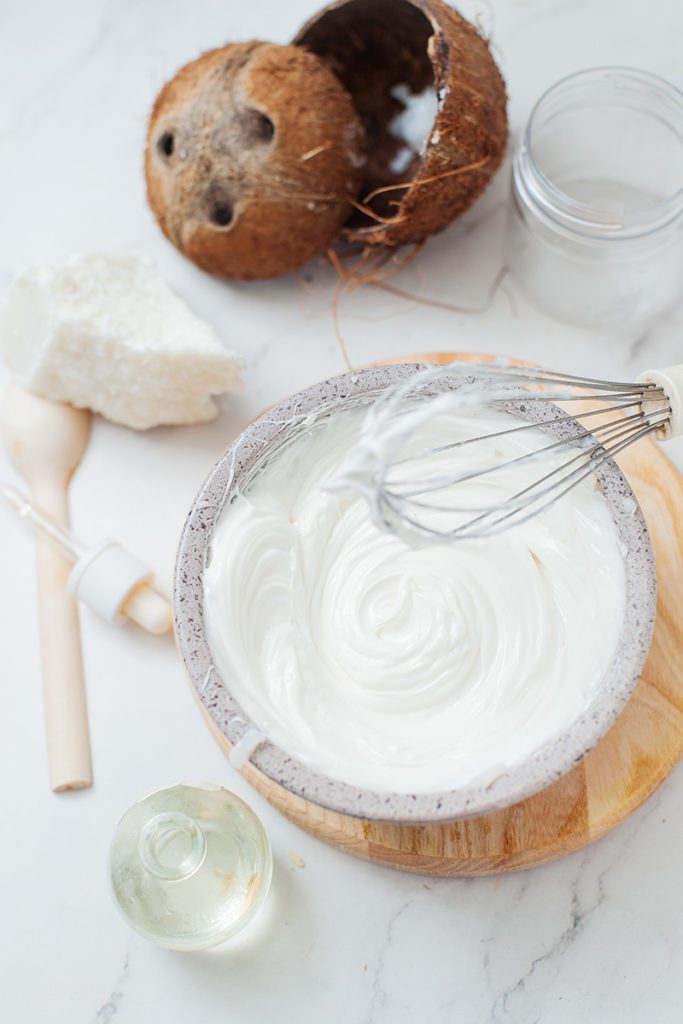

Instructions:
- Melt the shea butter and coconut oil in a double boiler over medium heat until completely melted.
- Remove from heat and add the jojoba oil, Vitamin E oil, and a few drops of essential oil (if using). Stir well.
- Let the mixture cool for 10-15 minutes, then place in the fridge until it’s partially solidified.
- Once the mixture has partially solidified, whip it with an electric hand mixer until it’s light and fluffy.
- Spoon the body butter into a jar and store at room temperature.
Recipe 2: Mango Butter Body Butter
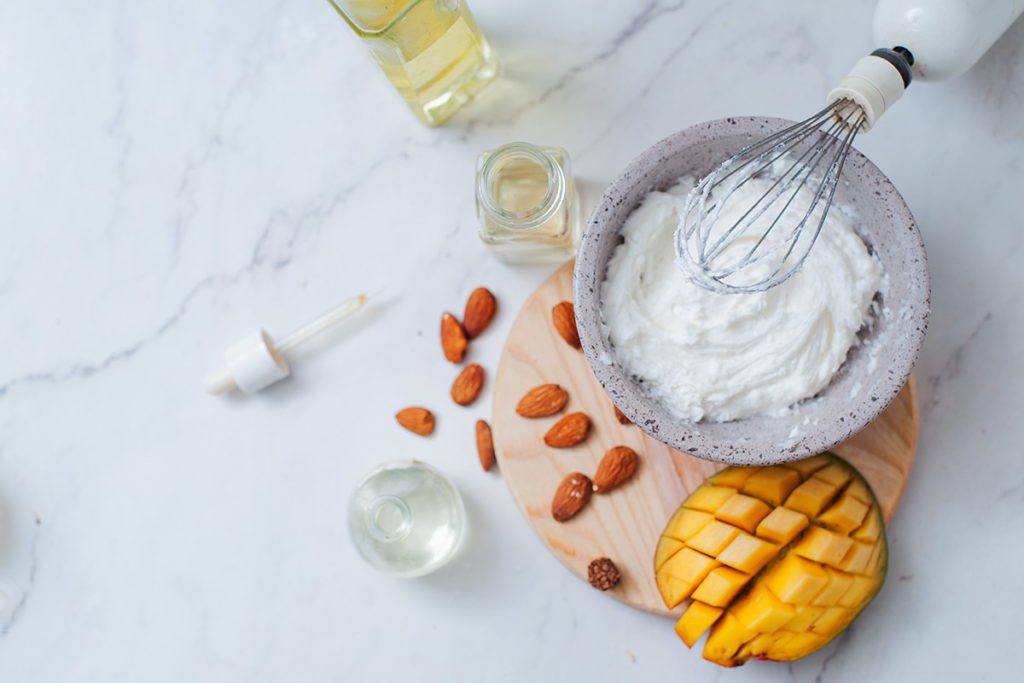

This DIY whipped body butter recipe uses mango butter for its high vitamin content and almond oil for its ability to soothe dry and irritated skin. Mango butter is rich in vitamins A and E, which help to rejuvenate the skin and maintain a healthy glow. Almond oil and jojoba oil are added for their moisturizing properties and to create a smooth, creamy texture. The addition of essential oils gives a personalized touch to this tropical body butter.
Ingredients:
- 1 cup mango butter
- 1/4 cup almond oil
- 1/4 cup jojoba oil
- 1 drop of Vitamin E Oil (to preserve)
- 10-15 drops of your favorite essential oil (optional)
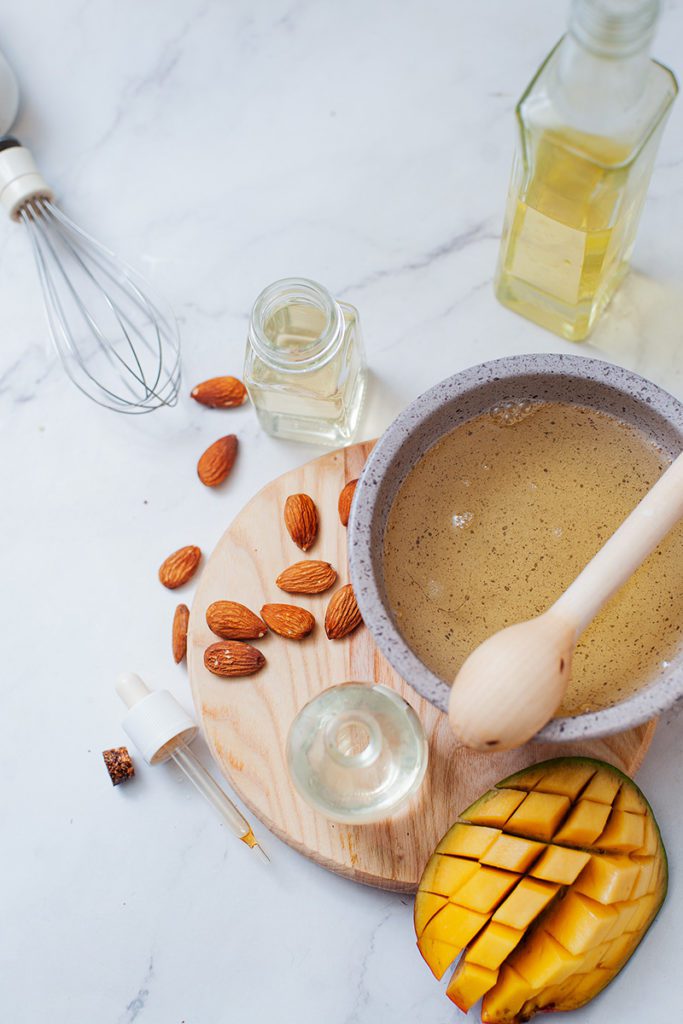

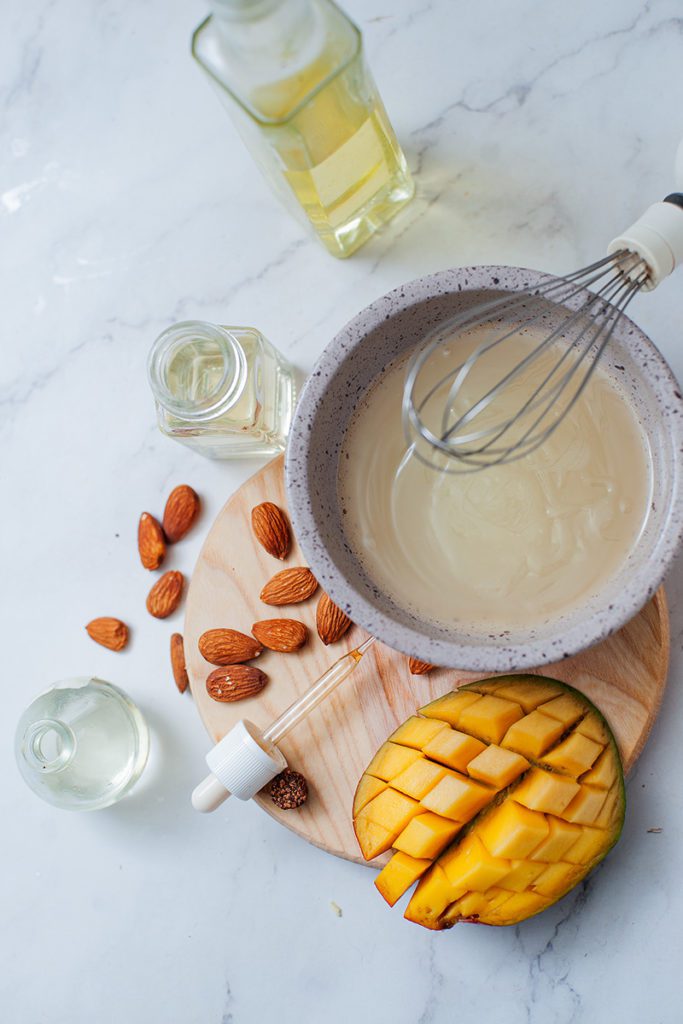

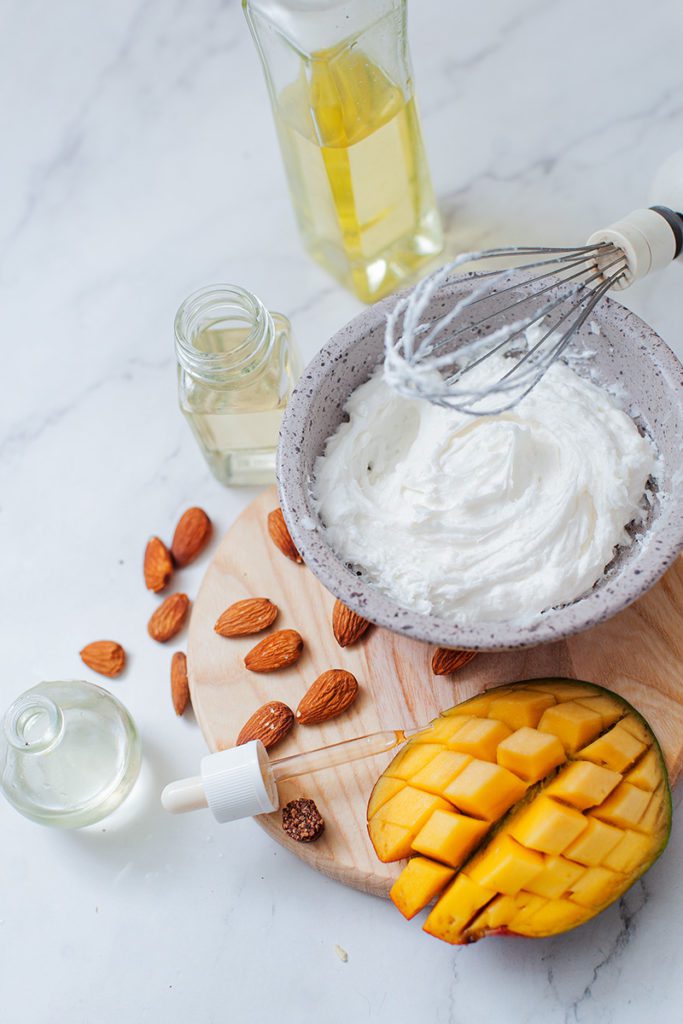

Instructions:
- Melt the mango butter in a double boiler over medium heat until completely melted.
- Remove from heat and add the almond oil, Vitamin E oil, and jojoba oil. Stir well.
- Let the mixture cool for 10-15 minutes, then place in the fridge until it’s partially solidified.
- Once the mixture has partially solidified, whip it with an electric hand mixer until it’s light and fluffy.
- Add essential oil if desired, then spoon the body butter into a jar and store at room temperature.
Recipe 3: Cocoa Butter Body Butter
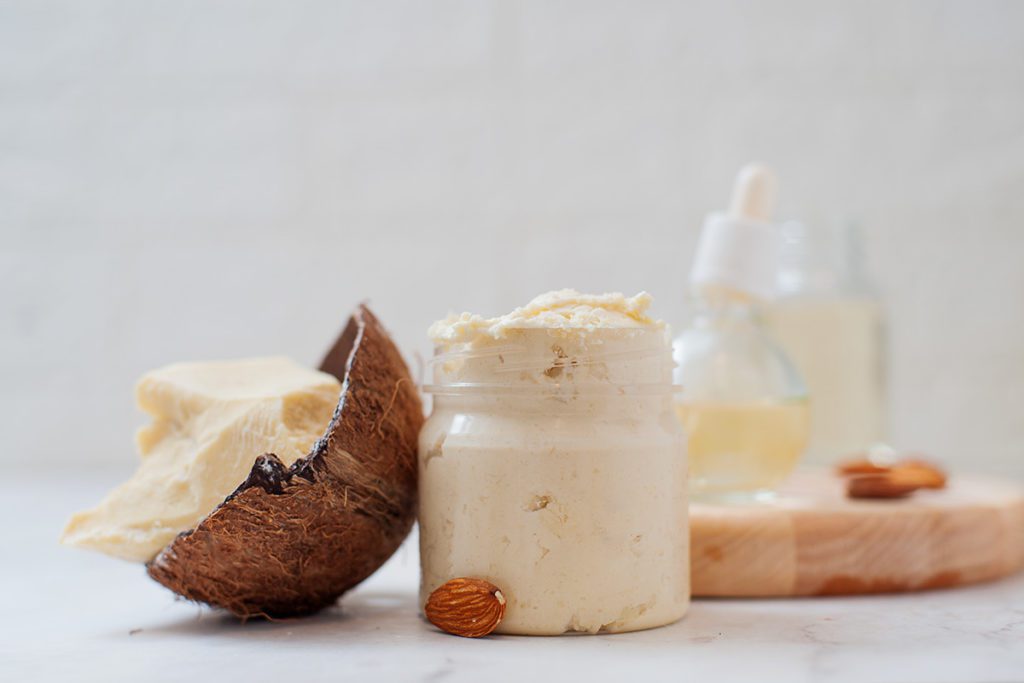

This decadent body butter is like a dessert for your skin. Cocoa butter, known for its deep hydration and skin-softening properties, is the main ingredient. Coconut oil enhances the moisturizing effect, while sweet almond oil, rich in Vitamin E, adds an extra layer of skin protection. The optional essential oils can add a calming or invigorating aroma, depending on your preference.
Ingredients:
- 1 cup cocoa butter
- 1/4 cup coconut oil
- 1/4 cup sweet almond oil
- 1 drop of Vitamin E Oil (to preserve)
- 10-15 drops of your favorite essential oil (optional)
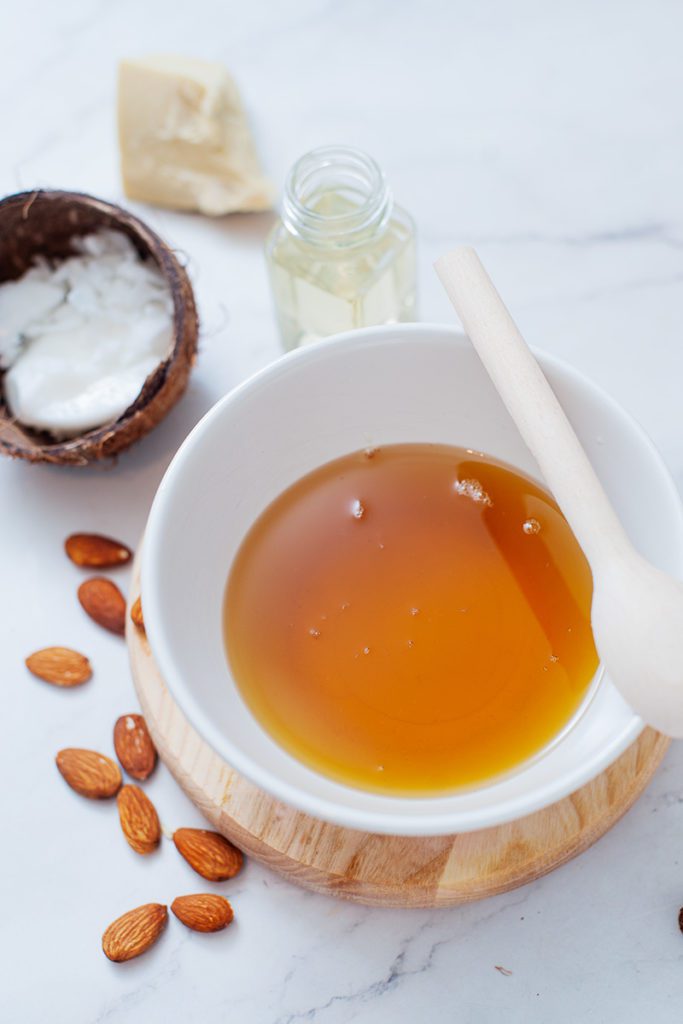

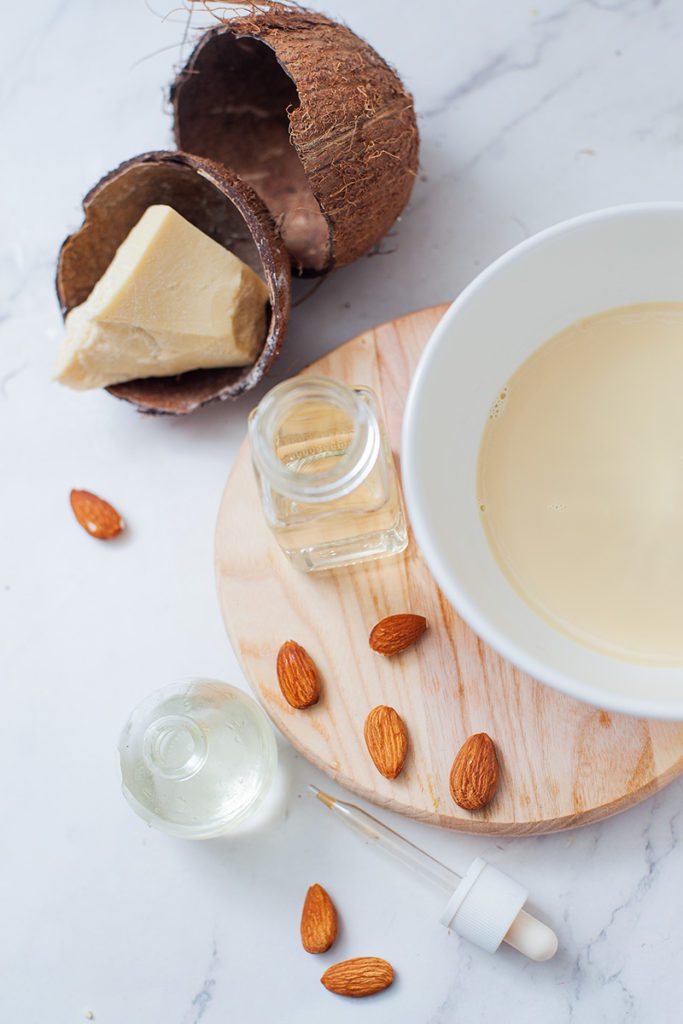

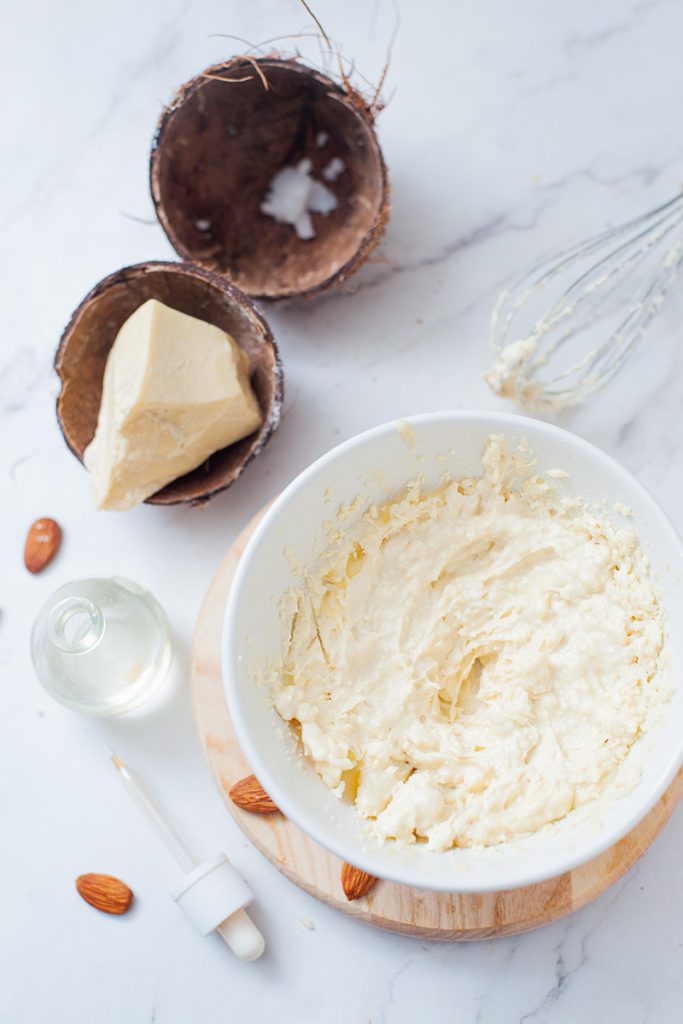

Instructions:
- Melt the cocoa butter and coconut oil in a double boiler over medium heat until completely melted.
- Remove from heat and add the sweet almond oil, Vitamin E oil, and a few drops of essential oil (if using). Stir well.
- Let the mixture cool for 10-15 minutes, then place in the fridge until it’s partially solidified.
- Once the mixture has partially solidified, whip it with an electric hand mixer until it’s light and fluffy.
- Spoon the body butter into a jar and store at room temperature.
Recipe 4: Soothing Body Butter for Eczema and Rosacea-Prone Skin
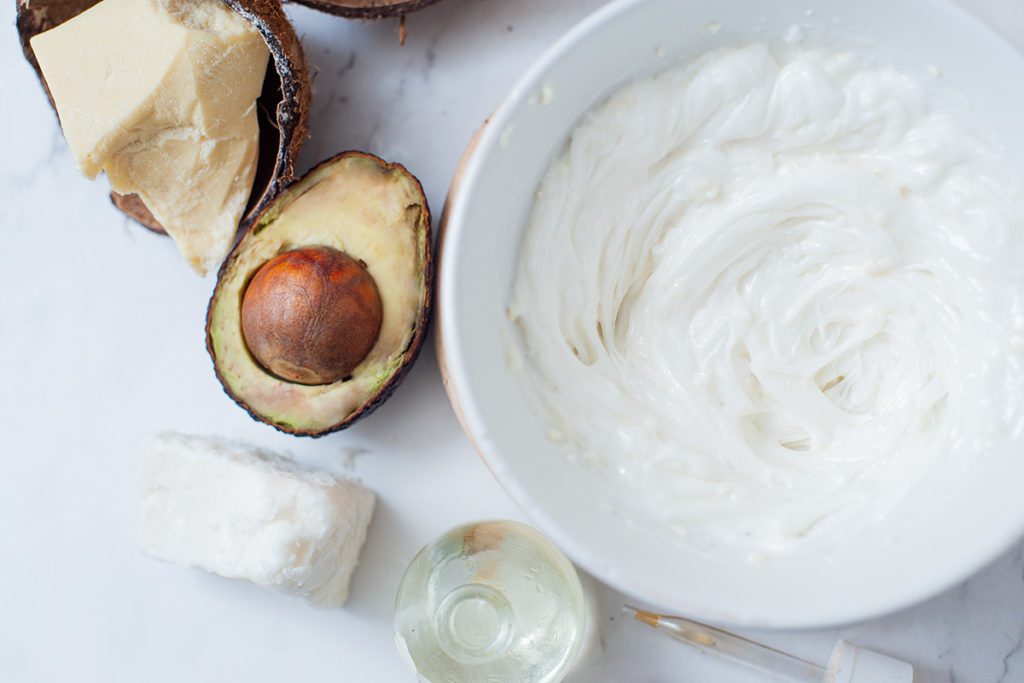

This fantastic body butter contains a combination of ingredients that are known to be soothing and moisturizing for eczema and rosacea-prone skin. Shea and cocoa butter are both rich in antioxidants and anti-inflammatory compounds that can help reduce inflammation and irritation. Coconut oil and avocado oil are both moisturizing and can help improve skin elasticity, while lavender essential oil has anti-inflammatory and calming properties that can help soothe skin irritation.
Ingredients:
- 1/2 cup shea butter
- 1/2 cup cocoa butter
- 1/4 cup coconut oil
- 1/4 cup avocado oil
- 1 drop of Vitamin E Oil (to preserve)
- 10-15 drops of lavender essential oil
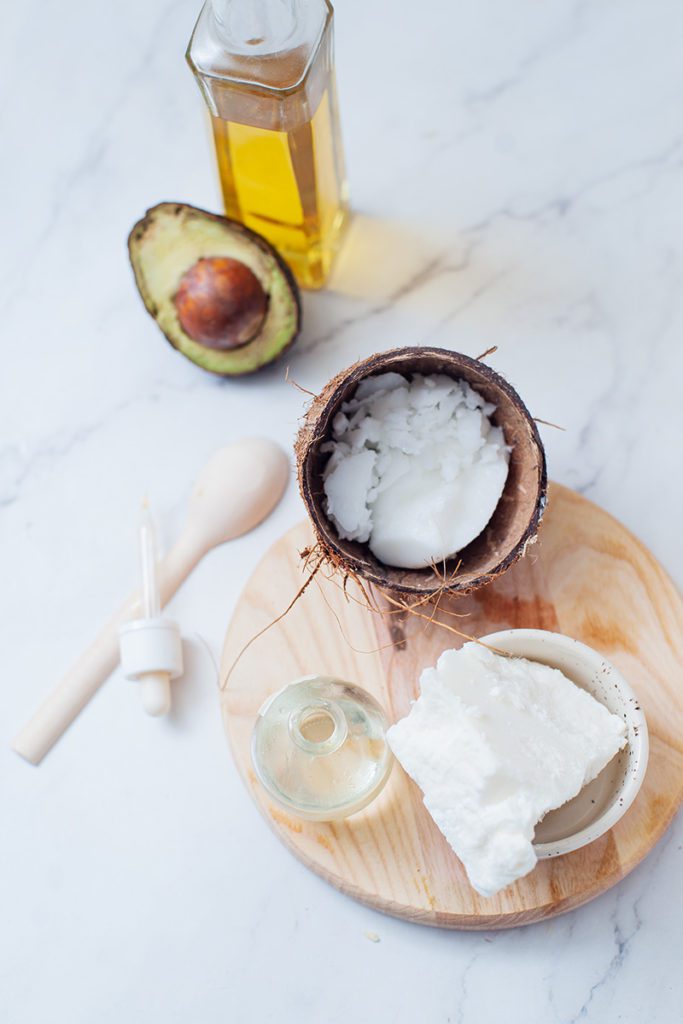

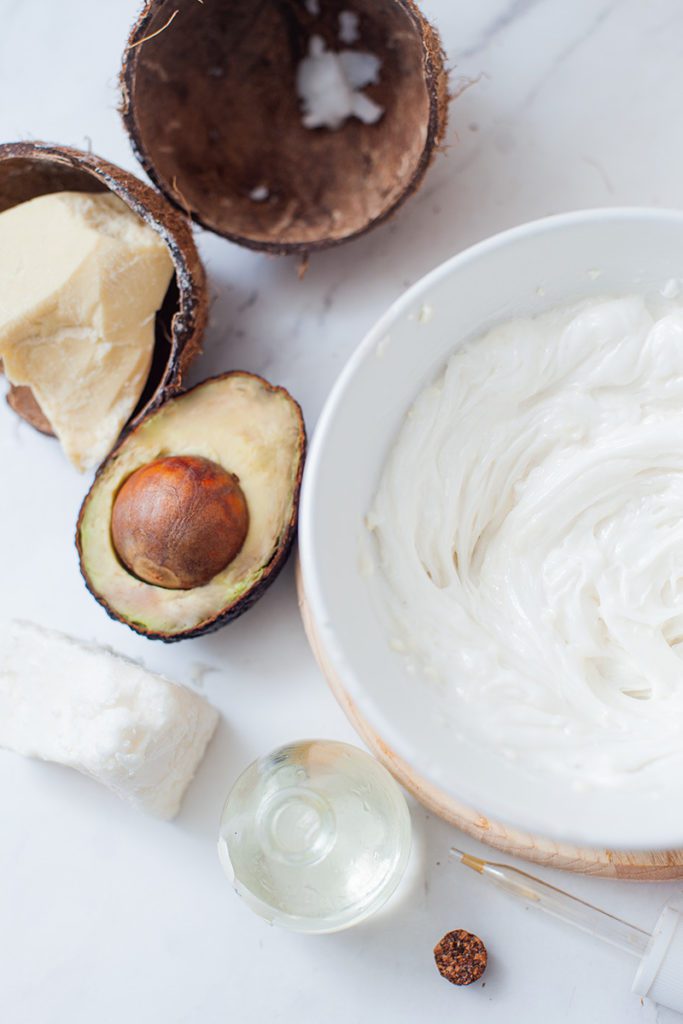

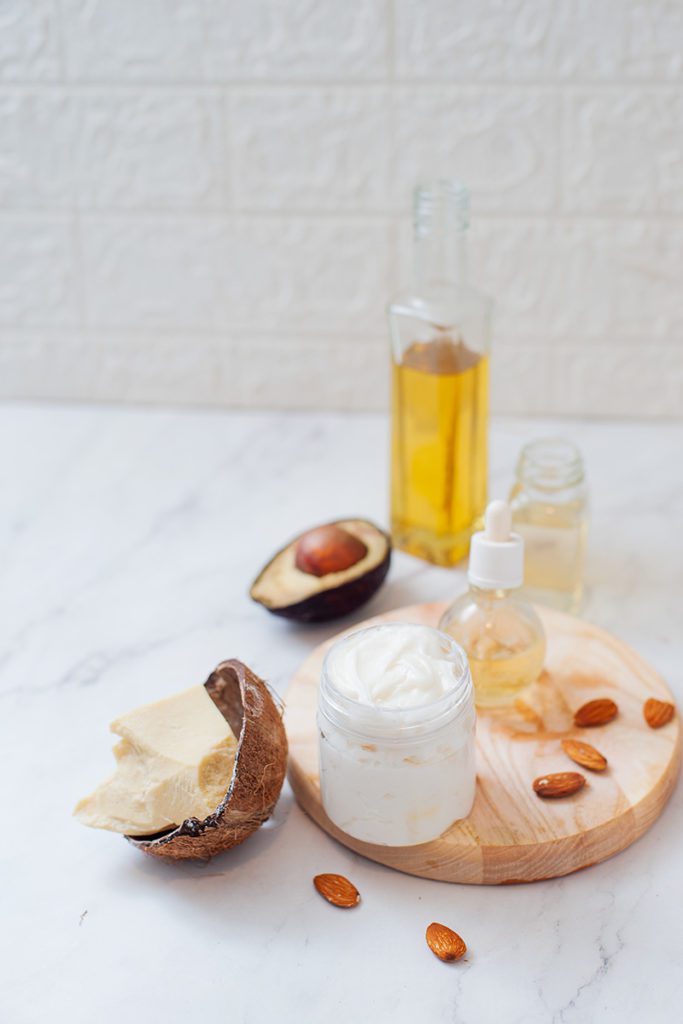

Instructions:
- Melt the shea butter, cocoa butter, and coconut oil in a double boiler over medium heat until completely melted.
- Remove from heat and add the avocado oil, Vitamin E oil, and a few drops of essential oil. Stir well.
- Let the mixture cool for 10-15 minutes, then place in the fridge until it’s partially solidified.
- Once the mixture has partially solidified, whip it with an electric hand mixer until it’s light and fluffy.
- Spoon the body butter into a jar and store at room temperature.
How to Fix Common Homemade Body Butter Issues
Making your own body butter is a rewarding process, but it can sometimes present a few challenges. Here are some common body butter recipe issues you might encounter and how to fix them:
How to Thicken Body Butter
If your body butter is too thin or runny, it might be because it hasn’t cooled enough before whipping. Try placing it back in the fridge until it’s partially solidified, then whip it again. If it’s still too thin, you can add more of your solid butter (shea, mango, or cocoa butter) to increase the thickness. Melt the additional butter, let it cool slightly, then mix it into your existing whipped body butter, and whip again.
There are a few other ingredients that you could add to your homemade body butter to thicken it up, though I personally prefer not to add them (it can make whipped body butter feel more grainy if it’s not mixed well).
Arrowroot powder, or arrowroot starch, is a natural thickening agent that’s often used in cooking, but it also has benefits in skincare products. It’s a light, white powder that, when mixed with oils, can help to create a smoother, less greasy feeling to your body butter. Arrowroot powder can be particularly beneficial if you find that your body butter leaves a slightly oily residue on your skin.
Tapioca starch, also known as tapioca flour, is a natural ingredient derived from the cassava root and acts as a natural thickening agent. If you find that your body butter is too oily or runny, adding a bit of tapioca starch can help achieve a more desirable, creamy consistency. It also has a silky, smooth texture that can make your body butter feel more luxurious and easier to apply. It’s also known to absorb excess oil, which can be beneficial if you’re aiming for a non-greasy finish.
So, if you’re after that perfect, spreadable consistency and a non-greasy feel, tapioca starch could be the secret ingredient you’re looking for in your homemade body butter recipe. Just remember, a little goes a long way!
As always, it’s about finding what works best for your skin and your personal preferences.
How to Fix Runny Body Butter
Runny body butter can be a result of too much carrier oil or not enough solid butter. If your body butter is too runny, try adding more solid butter to the mix. Gently melt it separately, let it cool slightly, then gradually mix it into your runny body butter. Whip the mixture until it reaches the desired consistency.
Another reason for runny body butter could be the temperature. If your home is warm, the body butter might melt and become runny. In this case, store your body butter in a cooler place or even in the fridge. However, remember that this will make it harder, so you’ll need to let it warm up a bit before use.
How to Prevent Body Butter from Becoming Grainy
Sometimes, body butter can become grainy after a while. This is often due to the way the butter cools down. To prevent this, once you’ve melted your solid butter and mixed it with the other ingredients, let it cool at room temperature until it’s just starting to solidify around the edges. Then, place it in the fridge until it’s partially solidified. Whip it at this point, and you should get a smooth, creamy body butter.
Remember, homemade body butter is a natural product without any stabilizers or emulsifiers, so its texture might vary slightly. But with these tips, you should be able to create a luscious, moisturizing body butter that’s perfect for your skin!
How to Choose the Best Butter for Your Skin Type
Choosing the right butter for your skin type is crucial to ensure that your skin gets the best care. Here’s a quick guide:
- Dry Skin – If you have dry skin, shea butter and cocoa butter are your best bets. Shea butter is incredibly nourishing and moisturizing, perfect for skin that needs an extra dose of hydration. Cocoa butter, on the other hand, is rich in fatty acids, which can provide a protective barrier over your skin to hold in moisture.
- Oily Skin – For oily skin, mango butter is a great choice. It’s non-comedogenic, meaning it won’t clog your pores. It’s also light and absorbs quickly, so it won’t leave your skin feeling greasy. Tapioca or arrowroot powder might be a worthwhile addition, but keep in mind that a little goes a lonnngggg way.
- Sensitive Skin – If you have dry and sensitive skin, shea butter is a safe option. It’s incredibly gentle on the skin and has anti-inflammatory properties that can help soothe irritation and redness.
- Combination Skin – For combination skin, a mix of shea and mango butter can work well. Shea butter can provide intense moisture for dry patches, while mango butter can help balance oil production in oily areas.
Remember, the best butter for your skin will also depend on your personal preferences, such as the butter’s texture and smell. Don’t be afraid to experiment with different butters to find the one that suits your skin the best.
Frequently Asked Questions
How do you store homemade whipped body butter?
Homemade body butter, when made and stored properly, can last anywhere from 6 months to a year. The shelf life is largely dependent on the freshness of the oils and butters you use. If you’re using fresh, high-quality ingredients and you store your body butter correctly, it can last up to a year. However, if you’re using older oils or butters, or if you don’t store your body butter properly, it may only last a few months.
Storing your homemade body butter is simple. Keep it in a cool, dry place out of direct sunlight. A glass jar with a tight-fitting lid is ideal for storage. This will help keep out any moisture and prevent contamination. If you live in a particularly warm climate, you might want to store your body butter in the refrigerator to prevent it from melting. Remember, if your body butter changes color, texture, or smell, it’s best to discard it and make a fresh batch.
How do you make glowing body butter?
Making a glowing body butter involves using ingredients that nourish and hydrate the skin. The key is to use a combination of butters like shea, mango, or cocoa butter, which are rich in vitamins and antioxidants. These butters are melted and mixed with oils like coconut, jojoba, or almond oil, which provide additional moisturizing benefits. Essential oils can also be added for their therapeutic properties and fragrance. Once the mixture is cooled and partially solidified, it’s whipped until it becomes light and fluffy, creating a luxurious body butter that leaves your skin glowing.
What can I add to shea butter to make my skin glow?
Shea butter alone is a fantastic skin moisturizer, but you can enhance its benefits by adding other ingredients. For a glowing skin effect, consider adding oils like jojoba or coconut oil, which are known for their hydrating properties. Essential oils like lavender or tea tree can also be added for their skin-enhancing benefits. For instance, lavender has anti-inflammatory properties, while tea tree can help with acne-prone skin.
Which butter is best for glowing skin?
All butters like shea, mango, and cocoa have unique properties that can contribute to glowing skin. Shea butter is known for its moisturizing and anti-inflammatory properties. Mango butter is rich in vitamins A and C, which can help brighten the skin and improve skin tone. Cocoa butter is highly moisturizing and can help lighten dark spots and even out skin tone. The best butter for you depends on your skin type and specific needs.
How do you make body butter for smooth skin?
Making body butter for smooth skin involves using ingredients that hydrate and nourish the skin. Start with a base of a rich butter like shea, cocoa, or mango butter. Melt the butter and mix it with a carrier oil like coconut, jojoba, or almond oil. You can also add essential oils for their therapeutic properties and fragrance. Once the mixture is cooled and partially solidified, whip it until it’s light and fluffy. Regular use of this homemade body butter for glowing skin can result in smoother, softer skin.
Closing Thoughts
Ready to make your very own homemade body butter?? Give one of these a try and drop a comment to let me know how it goes! Also, I’d love to hear any tips or tricks you learned along the way. We can share with everyone who comes through here!
